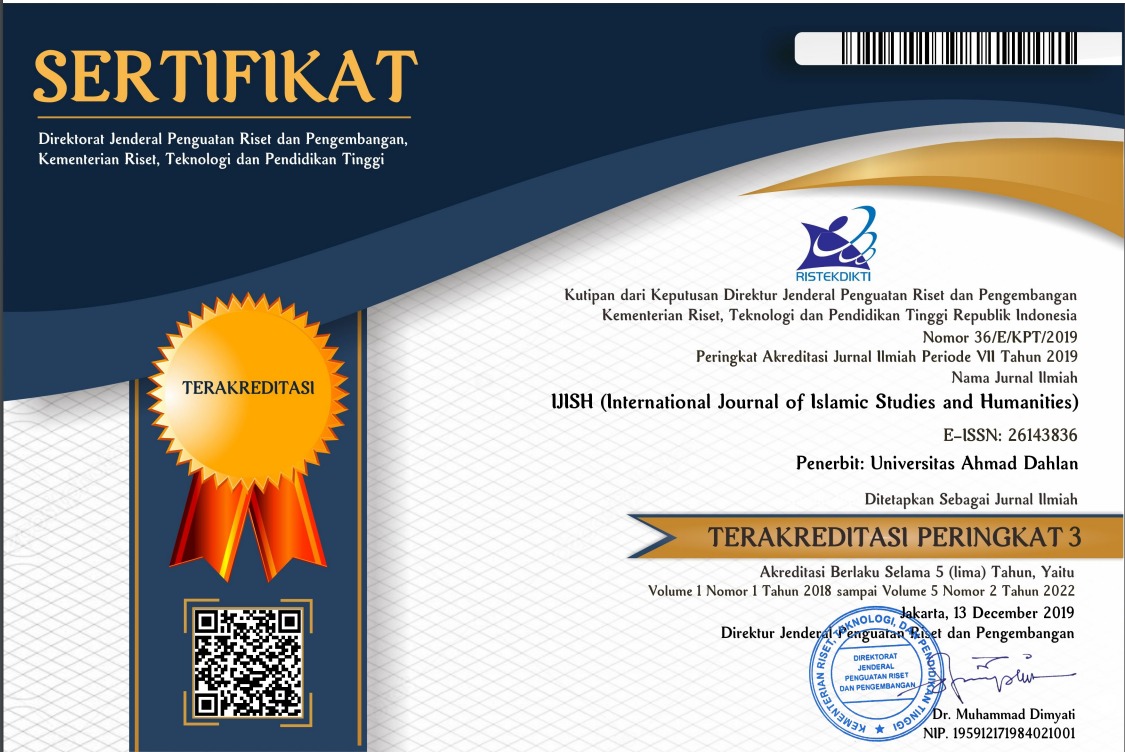Al-Ad’iyyah al-Ma’tsūrah and Its Use in Arabic Language Practice
DOI:
https://doi.org/10.26555/ijish.v1i2.560Keywords:
Language learner, Daily remembrance, Islamic terms, Malaysian learnersAbstract
Some of challenging features faced by the Arabic language learners are lack of linguistic vocabulary, psychological motivation, the scarcity of cognitive and social materials, and the difficulty of practicing second or foreign languages among learners. Therefore, it is necessary to establish a search for elements and sources that help the leaners to face those difficulties. The researchers believe that the daily remembrance (dzikr) of the Qur’anic verses, the prophetic traditions, and the invocations (du’a) that Muslims deal with in their daily lives can be among the specific sources of Arabic language practice among non-Arab learners. Therefore, the researchers by using analytical and experimental approach chose some Arabic words or vocabulary from the popular invocations used by Muslims in their daily recitations and then presented it in the Arabic language classes. The researchers conducted three experiments on three groups of Malaysian junior students in Arabic subject in the second and third stages. The study found there are many sources that prevent the practice of the Arabic language. These barriers related to several factors such as the lack of language adaptation, psychological and behavioral conditions. However, the study concluded that good selection of vocabulary, or language phrases, especially from daily Islamic terms, drives Malaysian learners to practice Arabic.Downloads
Published
2018-10-07
How to Cite
Masoud, M., Jalil, M. B., & Shamsudin, J. B. M. (2018). Al-Ad’iyyah al-Ma’tsÅ«rah and Its Use in Arabic Language Practice. IJISH (International Journal of Islamic Studies and Humanities), 1(2), 141–165. https://doi.org/10.26555/ijish.v1i2.560
Issue
Section
Articles
License
Authors who publish with IJISH (International Journal of Islamic Studies and Humanities) agree to the following terms:
- Authors retain copyright and grant the journal right of first publication with the work simultaneously licensed under a Creative Commons Attribution License (CC BY-SA 4.0) that allows others to share the work with an acknowledgment of the work's authorship and initial publication in this journal.Â
- Authors are able to enter into separate, additional contractual arrangements for the non-exclusive distribution of the journal's published version of the work (e.g., post it to an institutional repository or publish it in a book), with an acknowledgment of its initial publication in this journal.
- Authors are permitted and encouraged to post their work online (e.g., in institutional repositories or on their website) prior to and during the submission process, as it can lead to productive exchanges, as well as earlier and greater citation of published work.

This work is licensed under a Creative Commons Attribution-ShareAlike 4.0 International License.






